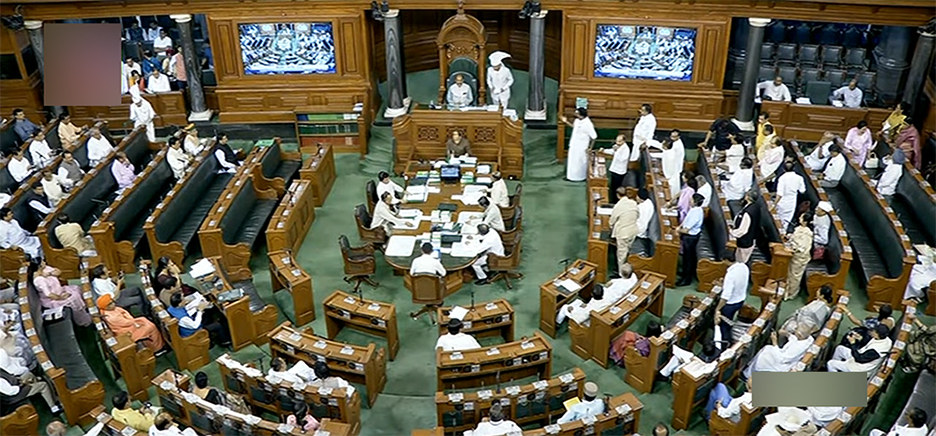The mystery around the special session deepens as the Narendra Modi government is still to reveal the reason behind this sudden move. Sonia Gandhi’s letter to the Prime Minister asking him to share the agenda was snubbed, with a reply by the Parliamentary Affairs Minister stating that the former Congress chief was not aware of the tradition, which is to first announce the dates of the session and then discuss the agenda. Well, the wait for the agenda has set off its own speculation—will the government make a move to drop the name India and just go with Bharat? But won’t that give the Opposition alliance (also called I.N.D.I.A.) a debating win? Will Narendra Modi try to postpone the upcoming round of Assembly polls due yearend (where the BJP is not tipped to do well), by pushing for One Nation One Election? But that needs a constitutional amendment to be ratified at the state levels, not to mention the logistical exercise to carry out such a task. There is no way this can be completed in time for the next general elections, stated for 2024. Hopefully, the government has learnt its lesson in pushing through half-baked decisions, as it did with the GST which is still being tinkered with. There are a couple of bills left in the BJP’s manifesto in-tray. Will the government introduce the Uniform Civil Code, even though the feedback has been against this, for this will impact the tribals as well and not just the Muslims? Will the government make an attempt to push the Women Reservation Bill. But both these could also be dealt with in November, why call a special session? Another possibility could be that the government is ready to restore statehood to J&K. The delimitation process is over and elections are expected soon. During the recently concluded hearings on Article 370, the Supreme Court asked the government for a time frame for restoring statehood. This would send the right optics to the regional parties that are wary of the Centre’s moves to curb state powers, especially in the light of the Modi government’s tussle with the Delhi Chief Minister. Other face-offs with Punjab, West Bengal and Tamil Nadu governments are giving Team Modi an anti-federalist aura that it may want to course correct. However, as with most items on the Modi government, one has to end with the statutory warning: that all this is speculation, no one knows the answer except the Prime Minister himself.
The Ghosi Win
The recent round of bypolls has given the I.N.D.I.A. alliance something to cheer about. All these were Assembly level and the Opposition won four of the seven—including UP’s Ghosi, Jharkhand’s Dumri, West Bengal’s Dhupguri, and Kerala’s Puthuppally, while the BJP won two seats in Tripura and a third in Bageshwar in Uttarakhand. Of these the most high profile was the Ghosi bypoll as this was necessitated by the resignation of Dara Singh Chauhan who had won the seat for the SP in 2022 but returned to the BJP thereafter. Ranging against the SP candidate Sudhakar Singh was another ally turned saffron, Om Prakash Rajbhar who campaigned aggressively for the BJP, as did the state CM Yogi Adityanath. From the I.N.D.I.A. bloc it was Akhilesh Yadav who dominated the campaign, while the Congress played a supporting role, but its Central leadership stayed away. (The constituency has nearly 4.38 lakh voters, of which 90,000 are Muslims, 60,000 Dalits and 77,000 from upper castes—45,000 Bhumhiars, 16,000 Rajputs and 6,000 Brahmins). The win will definitely boost Akilesh’s bargaining power for negotiating seats in Uttar Pradesh within the I.N.D.I.A. bloc. As he pointed out recently, during the 2017 Assembly polls when he allied with the Congress, he had displayed a bade dil ki dosti (large heart), offering the Congress over a hundred seats. However, these were “wasted” as the Congress had a pretty abysmal conversion rate. Perhaps it is now time for the Congress to return the gesture, because the party is still to get its act together in Uttar Pradesh. For I.N.D.I.A. to succeed, all the allies need to come together with a pragmatism that will outweigh their egos and show what Akhilesh calls a bade dil ki dosti.
BJP’s Rajasthan Confusion
The BJP is still to declare a CM face for Rajasthan. This could be in keeping with the party’s strategy of not declaring a CM candidate (in states where it is not in power) and fighting under the Prime Minister’s leadership. However when there is a tall leader in the state, who is also rumoured to be out of favour at the Centre, then it only adds to the confusion. While the media has been focusing on the Gehlot vs Pilot battle there is a much larger turf war within the BJP between

